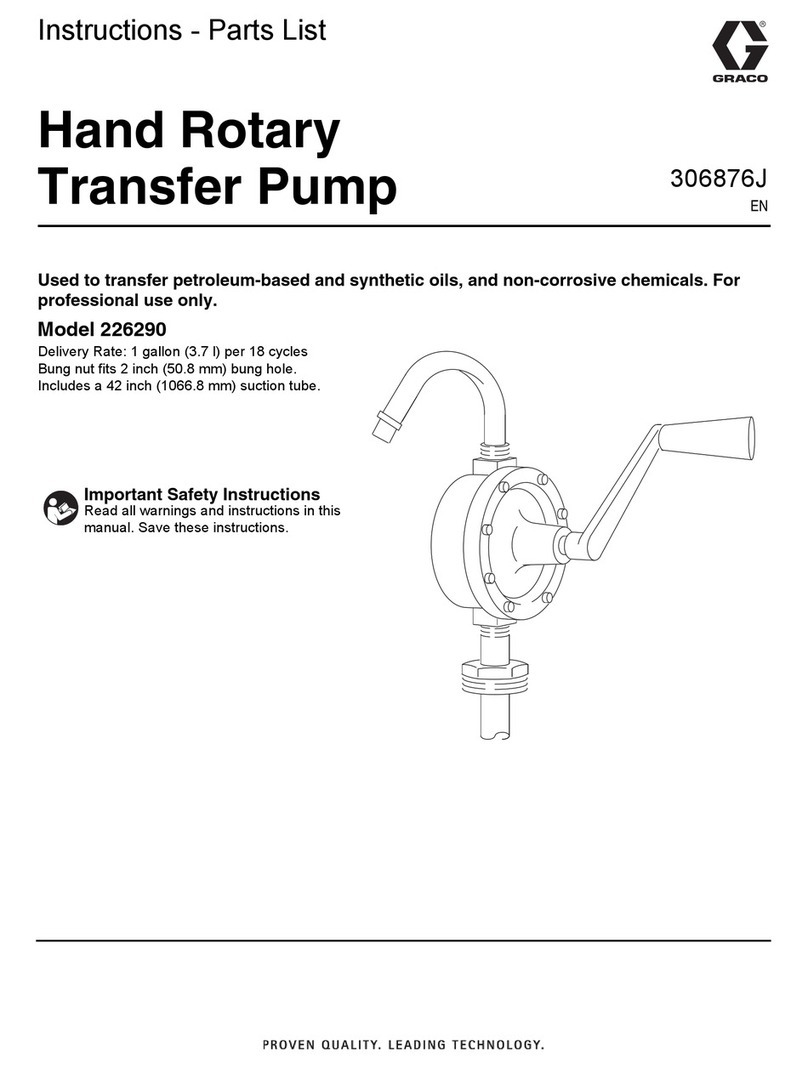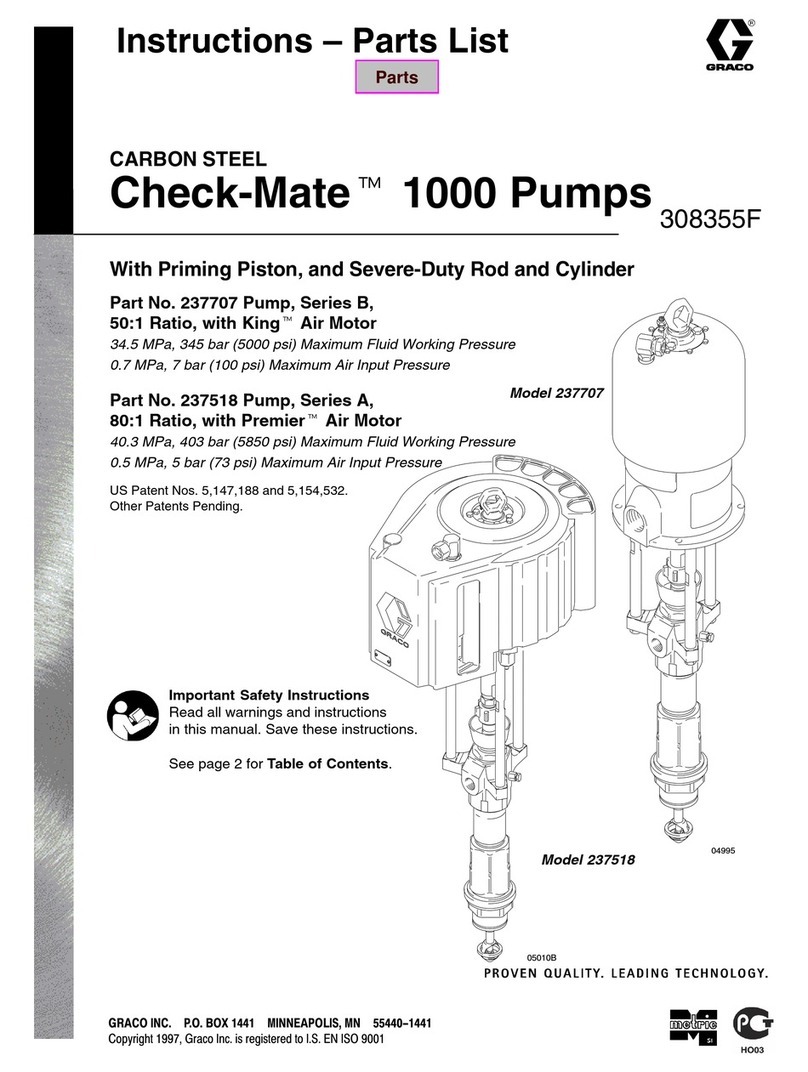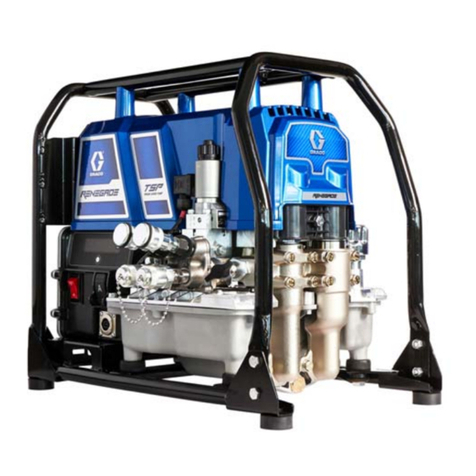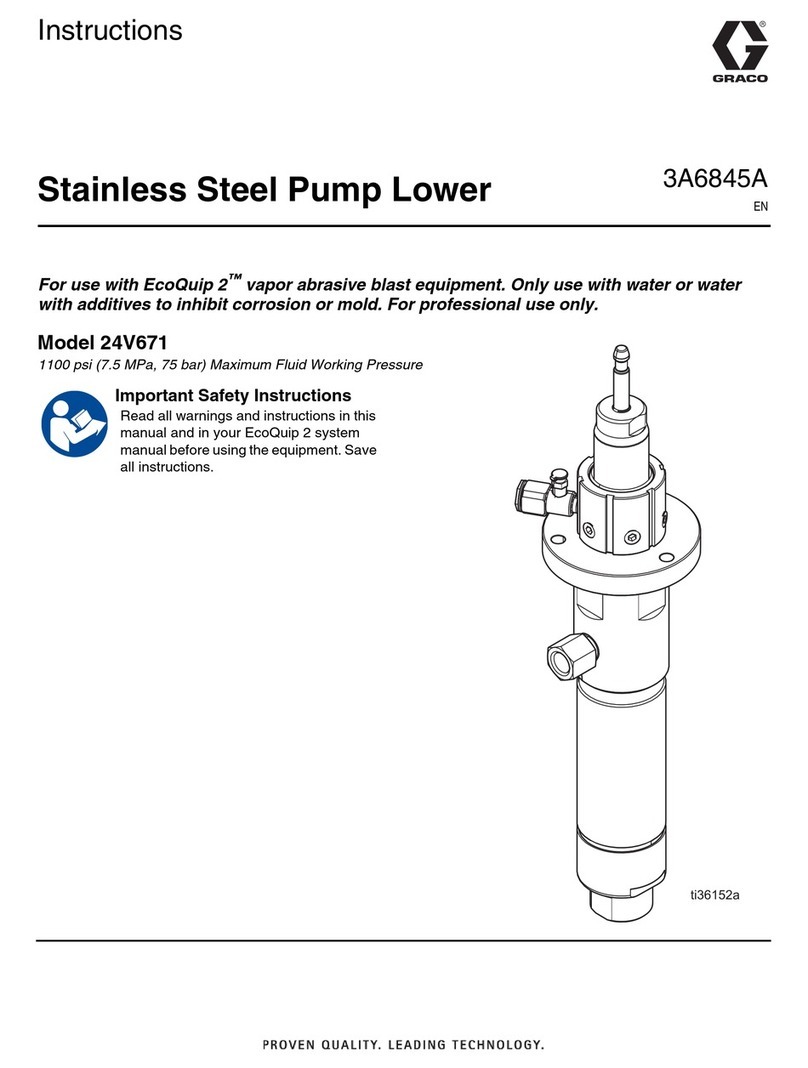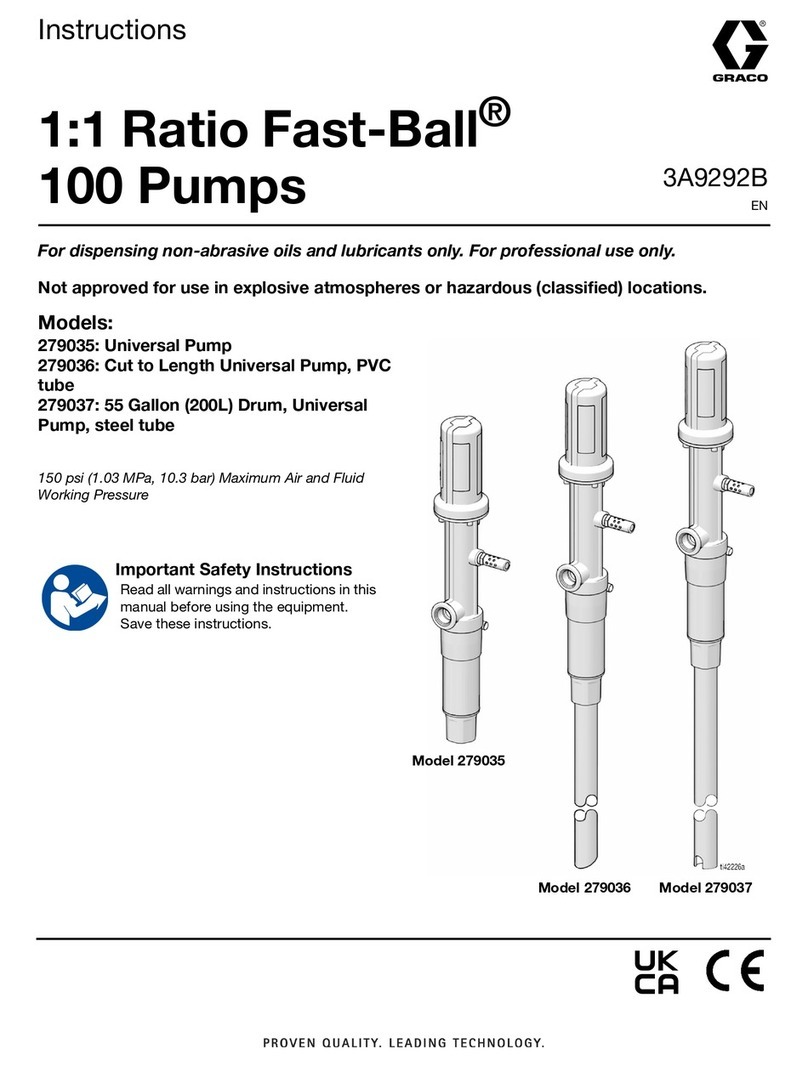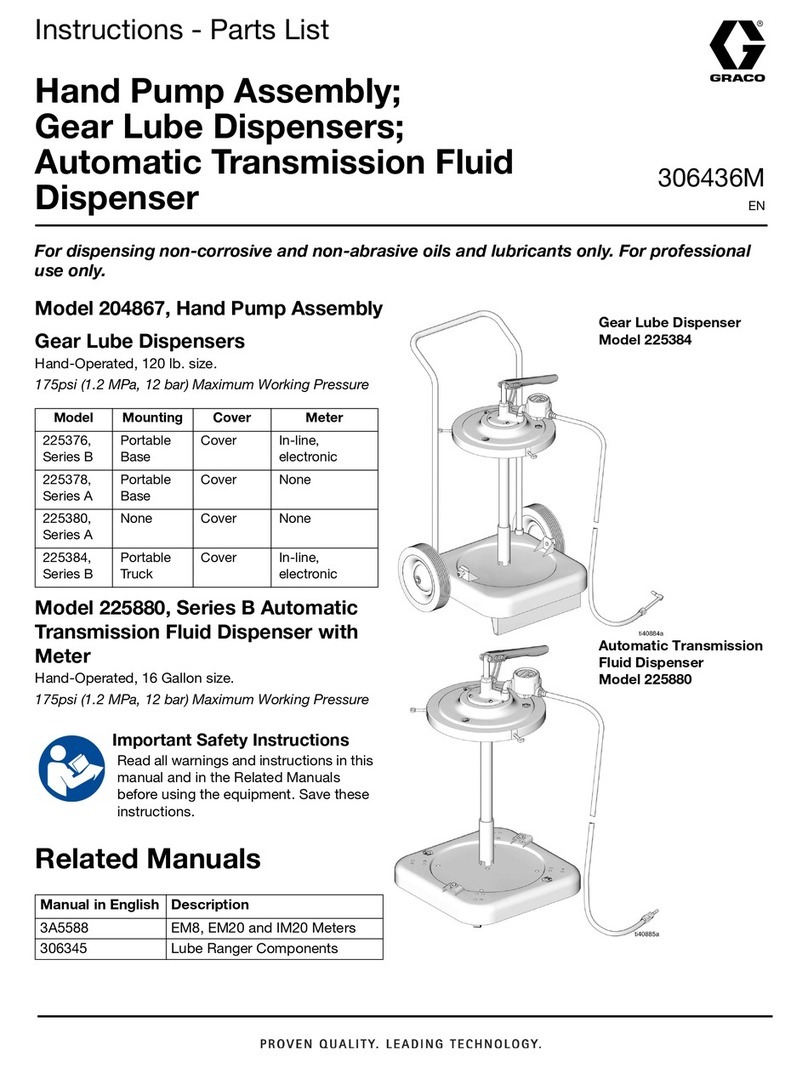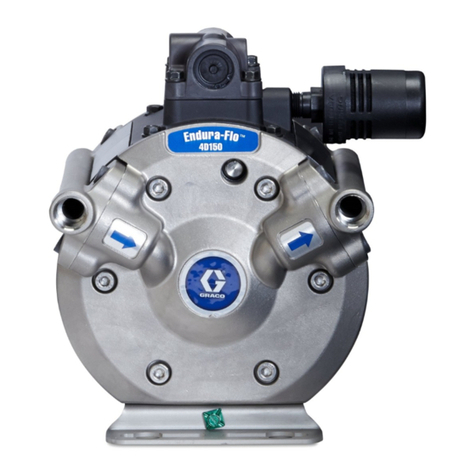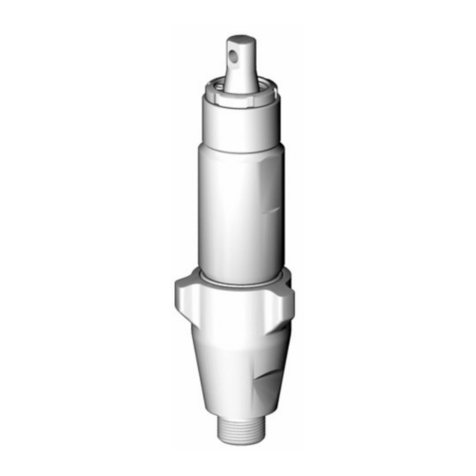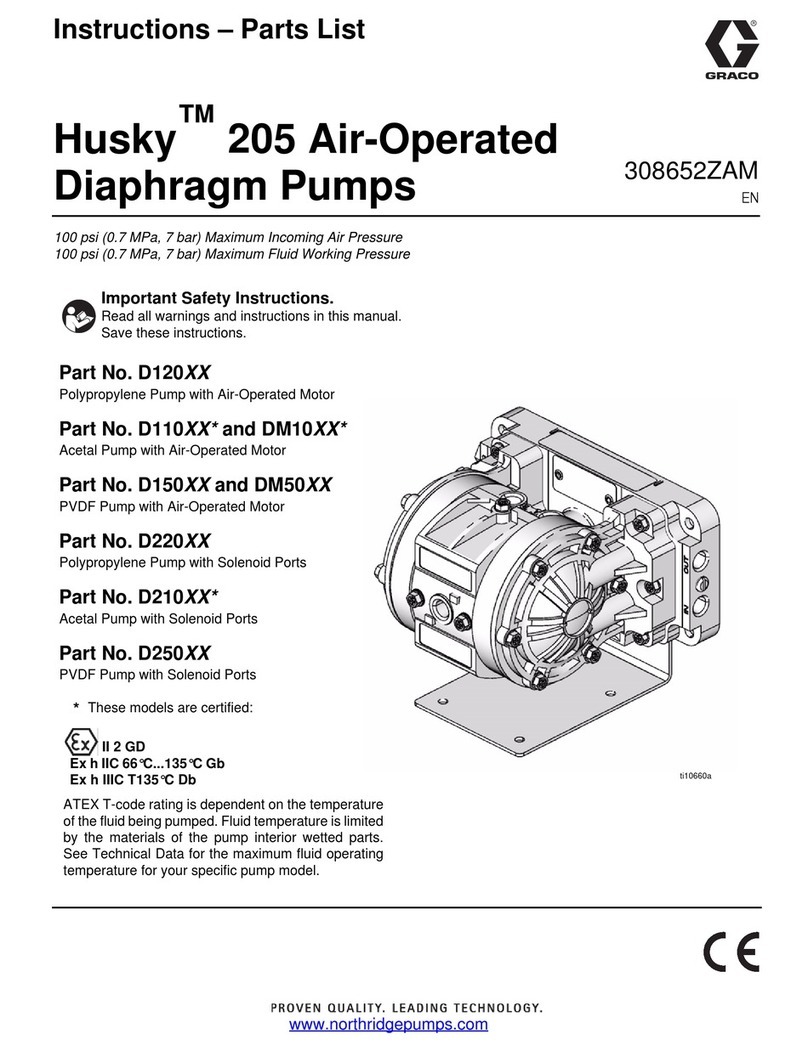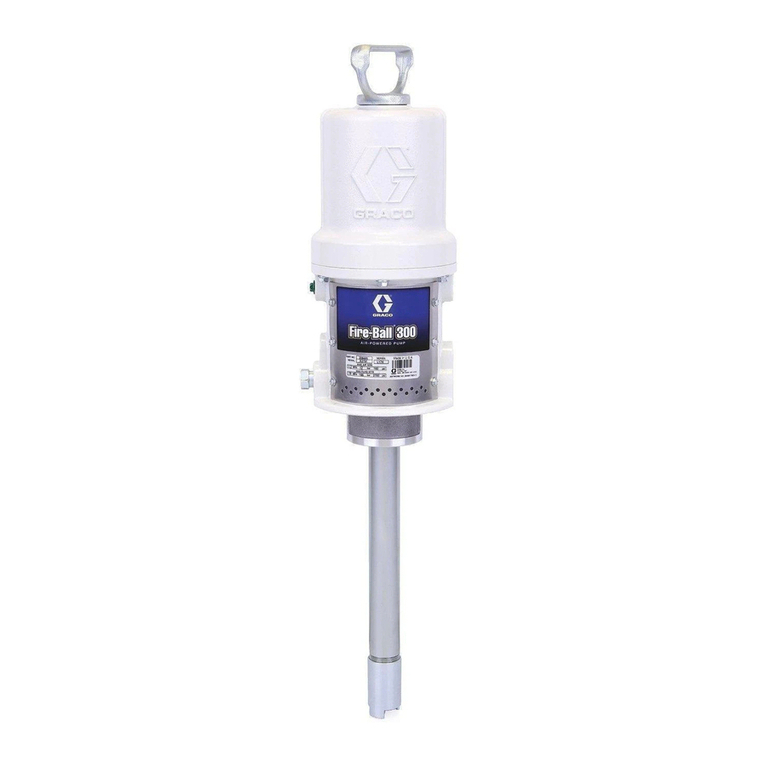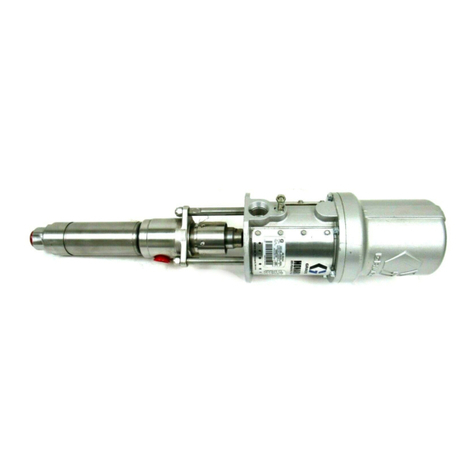
WARNING
HIGH PRESSURE SPRAY CAN CAUSE SERIOUS INJURY.
FOR PROFESSIONAL USE ONLY. OBSERVE ALL WARNINGS.
Read and understand all instruction manuals before operating equipment.
FLUID
iNJECTION HAZARD s IL,,. ; ,, , ‘ , ,,,i.. I ,.I, :
s,...,,,,.“.I;<.;
General Safety
This equipment generates very high fluid pressure. Spray from
a spray gun, leaks or ruptured components can inject fluid
through your skin and into your body and cause extremely
serious bodily injury, including the need for amputation. Also,
fluid injected or splashed into the eyes can cause serious
damage.
NEVER point the spray gun or dispensing valve at anyone or at
any part of the body. NEVER put hand or fingers over the
spray tip.
On a spray gun, ALWAYS have the tip guard in place when
spraying.
ALWAYS follow the Pressure Relief Procedure, below,
before cleaning or removing a spray tip or servicing any
system equipment.
NEVER try to stop or deflect leaks with your hand or body.
Be sure equipment safety devices are operating properly
before each use.
Medical Treatment
If any fluid appears to enetrate your skin get
EMERGENCY klEDlCAL CARi AT ONCE.
DO NOT TREAT AS A SIMPLE CUT.
Tell the doctor exactly what fluid was injected. For treatment
instructions, have your doctor call the
NATIONAL POISON CENTER NETWORK
(41216816669
Spray Gun and Dispensing Valve Safety Devices
Be sure all spray gun or dispensing valve safety devices are
operating properly before each use. Do not remove or modify
any
part
of the gun or valve; this can cause
a
malfunction and
result in serious bodily injury.
Safety Latch
If your spray gun or dispensing valve has a safety latch, always
set it in the closed or “safe” position whenever you stop
spraying, even for a moment, making sure the gun or valve is
inoperative. Failure to set the safety latch can result in ac-
cidental triggering of the gun or valve.
Diffuser (Spray Guns Only)
The spray gun diffuser breaks up spray and reduces the risk of
injection when the tip is not installed. Check diffuser operation
regularly. Follow the
Pressure Relief Procedure,
below,
then remove the spray tip. Aim the gun into a metal pail,
holding the gun firmly to the pail. Using the lowest possible
pressure, trigger the gun. If the fluid emitted is not diffused in-
to an irregular stream, replace the diffuser immediately.
Tip Guard (Spray Guns Only)
ALWAYS have the tip guard in place on the gun while spray-
ing. The tip guard alerts you to the injection hazard and helps
prevent accidentally placing your fingers or any part of your
body close to the spray tip.
Trigger Guard
If your spray gun or dispensing valve has a trigger guard,
NEVER operate the gun or valve with the trigger guard remov-
ed. The trigger guard reduces the risk of accidentally trigger-
ing the gun or the valve if it is dropped or bumped.
Spray Tip Safety
Use extreme caution when cleaning or changing spray tips. If
the spray tip clogs while spraying, engage the gun safety latch
immediately. ALWAYS follow the
Pressure Relief Pro-
cedure,
below, and then remove the spray tip to clean it.
NEVER wipe off build-up around the spray tip until pressure is
fully relieved and the gun safety latch is engaged.
Pressure Relief Procedure
To reduce the risk of serious bodily injury, including injection or injury from moving parts, always follow this procedure
whenever you shut off the pump, when checking or servicing any part of the spray or dispensing system, when installing, clean-
ing or changing spray tips, and whenever you stop spraying. (1) Engage the gun safety latch if your spray gun or dispensing
valve has one. (2) Shut off the air to the pump. (3) Close the bleed-type master air valve (required in your system). 14) Disengage
the gun or valve safety latch. (5) Hold a metal part of the spray gun or dispensing valve firmly to the side of a grounded metal
pail, and trigger the gun or valve to relieve pressure. (6) Engage the gun or valve safety latch. (7) Open the pump bleeder valve,
having a container ready to catch the drainage. Also open the fluid drain valve, if your system has one. (81 Leave the bleeder
valve and fluid drain valve open until you are ready to spray or dispense again.
If you suspect that the spray tip< nozzle or hose is completely clogged, or that pressure has not been fully relieved after following
the steps above, VERY SLOWLY loosen the tip guard, nozzle, or hose end coupling and relieve pressure gradually, then loosen
completely. Now clear the tip, nozzle or hose.
Gerieral Safety
Any misuse of the spray equipment or accessories, such as
overpressurizing, modifying parts, using incompatible
chemicals and materials, or using worn or damaged parts, can
cause them to rupture and result in injection or other serious
bodily injury, fire, explosion or property damage.
NEVER alter or modify any part of this equipment; doing so
could cause it to malfunction.
CHECK all spray equipment regularly and repair or replace
worn or damaged parts immediately.
System Pressure
The 551 King pump develops 4950 psi (250 bar) MAXIMUM
WORKhVG
PRESSURE at 80 psi (6 bar) MAXIMUM INCOM-
ING AIR PRESSURE. NEVER exceed 90 psi (6 bar) air supply
to the pump. Be sure that all spray equipment and accessories
are rated to withstand the maximum working pressure of this
pump. DO NOT exceed the maximum working pressure of any
component or accessory used in the system.
Material Compatibility
BE SURE that all materials and solvents used are chemically
compatible with the wetted parts shown in the Technical Data
on the back cover. Always read the manufacturer’s literature
before using material or solvent in this sprayer.
2
306-970



